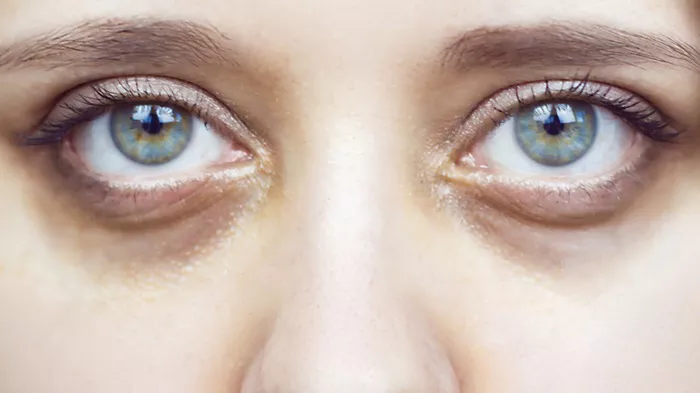Dark circles under the eyes, commonly referred to as “shiners,” can make you look older than you are and give the impression that you are fatigued or unwell. While often considered a cosmetic concern, understanding the underlying causes of these dark circles is essential for determining the best way to address them. This article delves into the myriad factors that contribute to the appearance of dark circles, exploring everything from genetic factors to lifestyle influences.
What Are Dark Circles Under the Eyes?
Dark circles under the eyes are distinguished by the skin beneath the eyes appearing darker than the surrounding areas. This can occur due to various reasons, including changes in skin structure, exposure to certain lifestyle factors, or medical conditions. The skin under the eyes is the thinnest on the body, making it particularly vulnerable to changes that can affect its appearance.
Anatomical and Genetic Factors
Thinness of the Under-Eye Skin: The skin under the eyes is extremely thin compared to other parts of the body, making the blood vessels more visible and giving the area a darker appearance.
Genetic Predisposition: In many cases, the tendency to develop dark circles is inherited. The distribution of melanin, which provides pigment to the skin, can be uneven and more concentrated under the eyes due to genetic factors.
Bone Structure: Deep set eyes or a prominent bone structure can create shadows that appear as dark circles. This structural aspect can be accentuated by lighting conditions, contributing to the appearance of shiners.
Lifestyle Influences
Sleep Deprivation and Fatigue: Insufficient sleep can cause the skin to become dull and pale, allowing for dark tissues and blood vessels beneath the skin to become more visible. Fatigue exacerbates this condition by causing a buildup of blood under the eyes.
Hydration: Dehydration can cause the skin to appear more sunken and shadowed, especially under the eyes. Maintaining adequate hydration is crucial for preventing this appearance.
Diet and Nutrition: Poor nutrition can impact the health of the skin. Deficiencies in certain nutrients like iron can lead to dark circles. Iron deficiency anemia reduces the availability of oxygen to body tissues, giving the skin under the eyes a bluish tint.
Environmental and External Factors
Sun Exposure: Prolonged exposure to the sun can cause the body to produce more melanin, the pigment that gives skin its color. Excessive sun exposure can darken the skin under the eyes.
Allergies and Dermatitis: Allergic reactions and skin conditions such as eczema can trigger dark circles. Allergies can also lead to eye rubbing, which can further darken the area.
Smoking and Alcohol Consumption: These habits contribute to under-eye circles. Smoking causes vascular (blood vessel) problems that can exacerbate the appearance of darkness under the eyes, while alcohol dehydrates the skin, making dark circles more apparent.
Age-Related Changes
Loss of Collagen: As we age, the skin loses collagen and becomes thinner and more translucent. This natural aging process makes the reddish-blue blood vessels under the eyes more visible.
Fatigue of Skin Tissue: Aging can also lead to the weakening of the surrounding eye tissue. This can cause fluid to build up beneath the eyes, creating a puffy appearance that can cast shadows, contributing to the look of dark circles.
Medical Conditions
Certain medical conditions can also lead to dark circles under the eyes. These include:
Thyroid Conditions: Hypothyroidism, for example, can cause the skin to appear pale, thereby enhancing the appearance of blood vessels beneath the skin.
Liver Disease: Conditions affecting the liver can cause jaundice, which can make the eyes and skin appear yellowish, while other liver conditions can lead to darkening of the skin in general.
Periorbital Hyperpigmentation: This is a condition characterized by increased pigmentation around the eyes, more common in darker-skinned individuals. It is often attributed to genetics or hormonal changes.
Treatment and Management
Addressing dark circles under the eyes involves a combination of lifestyle changes, medical treatments, and, when appropriate, cosmetic solutions:
Adequate Sleep and Nutrition: Ensuring sufficient sleep and a balanced diet rich in vitamins and minerals can help reduce the appearance of dark circles.
Skin Care and Cosmetics: Regular use of moisturizers and other skin care products specifically formulated for under-eye use can help. Cosmetics like concealers can also effectively cover dark circles.
Medical Treatments: For persistent dark circles, treatments like chemical peels, laser surgery, and fillers can be effective. These procedures should always be carried out by a qualified dermatologist.
Addressing Allergies and Health Conditions: Treating underlying health issues such as allergies or conditions that contribute to dark circles is crucial.
Conclusion
Dark circles under the eyes can be a pesky problem and often a source of cosmetic concern. However, by understanding the multitude of factors that contribute to their appearance—from genetic and anatomical factors to lifestyle and environmental influences—it becomes easier to address and manage them effectively. Whether through lifestyle adjustments, skin care, or medical interventions, it is possible to significantly reduce the appearance of dark circles and improve overall eye health.
[inline_related_posts title=”You Might Be Interested In” title_align=”left” style=”list” number=”6″ align=”none” ids=”7944,7829,7866″ by=”categories” orderby=”rand” order=”DESC” hide_thumb=”no” thumb_right=”no” views=”no” date=”yes” grid_columns=”2″ post_type=”” tax=””]












![Which vitamins are rich in dragon fruit: [Revealed!]](https://www.dailyhealthways.com/wp-content/uploads/2023/12/nutrition1.webp)



















